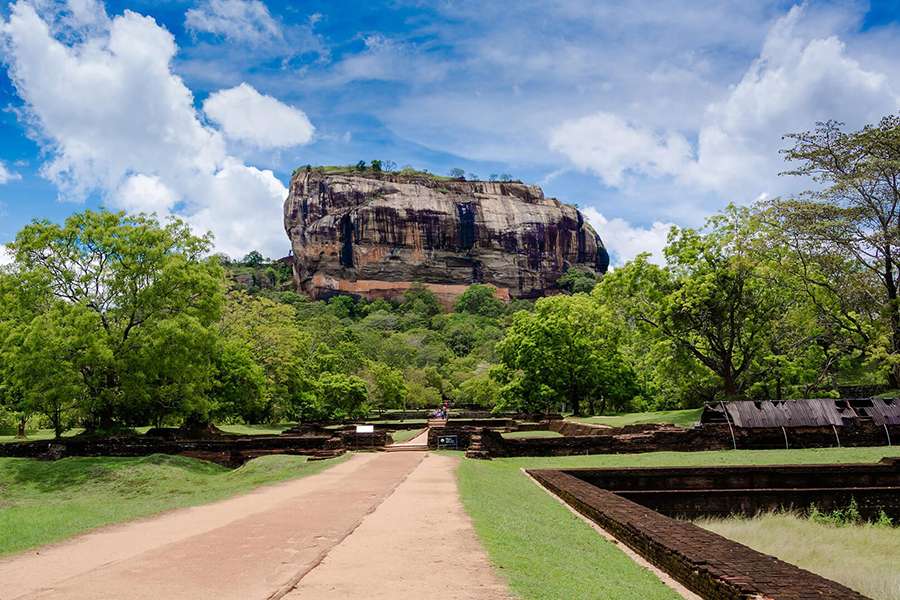The significance of a monument is emphasized when it is designated as a UNESCO heritage site. Sri Lanka, with a history dating back to 28000 BCE, boasts diverse heritage sites across different eras. Six culturally significant sites, including two natural ones, are located in historically prominent areas of Sri Lanka. These World Heritage Sites reflect the deeply rooted cultural traditions in Sri Lanka and how they are interpreted by the locals.
Sacred City of Anuradhapura
The Sacred City of Anuradhapura is an ancient city that was the capital of Sri Lanka for over a millennium. It is a UNESCO World Heritage Site and is considered a sacred place for Buddhists, as it contains the oldest historically documented tree in the world – the Sri Maha Bodhiya.
What is the history of the Sacred City of Anuradhapura?
The Sacred City of Anuradhapura is one of the oldest continuously inhabited cities in the world, with a history dating back to the 4th century BC. It was the capital of the Sinhalese kingdom and a center of Theravada Buddhism.
What are the main attractions in the Sacred City of Anuradhapura?
The Sacred City of Anuradhapura is an ancient city located in the North Central Province of Sri Lanka. It was the capital of the Anuradhapura Kingdom from the 4th century BC to the 10th century AD. The city is considered to be one of the most important archaeological sites in Sri Lanka and is home to many well-preserved ruins, including temples, palaces, and monasteries.
Some of the main attractions in the Sacred City of Anuradhapura include:
The Sri Maha Bodhi
This is a sacred fig tree that is said to have been planted by the Buddha himself. It is one of the most important religious sites in Sri Lanka and is visited by thousands of pilgrims each year.
The Ruwanwelisaya
This is a large stupa that was built in the 2nd century BC. It is one of the largest stupas in Sri Lanka and is considered to be one of the most beautiful examples of Sinhalese architecture.
The Jetavanaramaya
This is another large stupa that was built in the 3rd century AD. It is the tallest stupa in Sri Lanka and is also considered to be one of the most beautiful examples of Sinhalese architecture.
The Abhayagiriya Monastery
This is a large monastic complex that was built in the 1st century BC. It is one of the largest monastic complexes in Sri Lanka and is home to many well-preserved ruins, including temples, stupas, and monasteries.
The Lankarama Monastery
This is another large monastic complex that was built in the 3rd century AD. It is home to many well-preserved ruins, including temples, stupas, and monasteries.
The Sacred City of Anuradhapura is a UNESCO World Heritage Site and is considered to be one of the most important archaeological sites in Sri Lanka. It is a popular tourist destination and is visited by thousands of people each year.
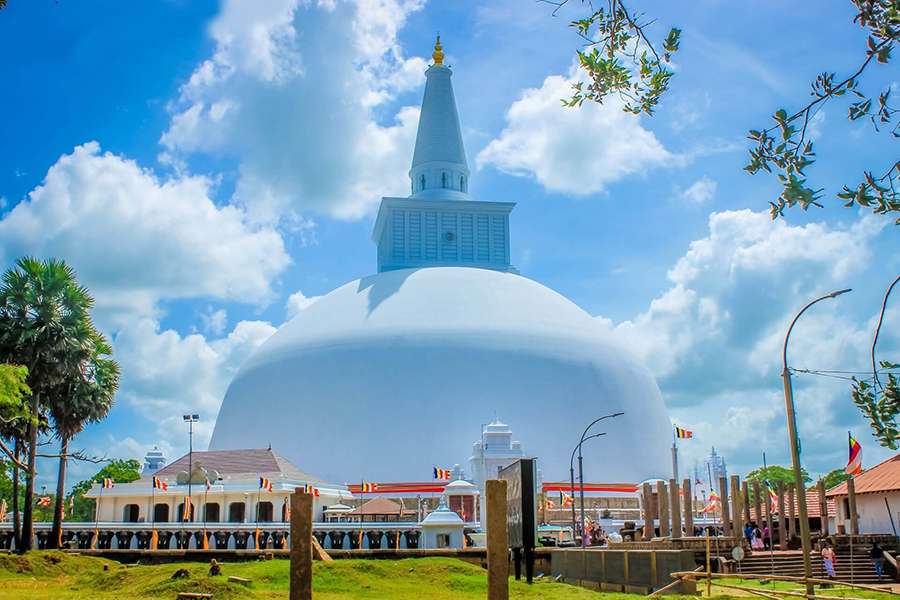
Sigiriya Rock Fortress
The Sigiriya Rock Fortress is a UNESCO World Heritage Site in Sri Lanka and is renowned for its historical and archaeological significance. It is a complex of ancient ruins including a palace, gardens, and frescoes, and is considered one of the best-preserved examples of ancient urban planning.
What is the best time to visit Sigiriya UNESCO World Heritage Site in Sri Lanka?
The Sigiriya UNESCO World Heritage Site in Sri Lanka is an ancient rock fortress and palace located in the central Matale District of the country. It is a popular tourist destination and is considered one of the most important archaeological sites in Sri Lanka.
The best time to visit Sigiriya is during the dry season, which lasts from December to April. During this time, the weather is generally sunny and dry, making it ideal for exploring the site. The months of May to September are considered the wet season, and while it is still possible to visit Sigiriya during this time, it is important to be aware that heavy rains can make it difficult to explore the site.
Sigiriya is a UNESCO World Heritage Site due to its cultural and historical significance. The site is home to a number of ancient ruins, including the remains of a palace, a temple, and a fortress. The most famous feature of Sigiriya is the Lion Rock, a large rock formation that rises 200 meters above the surrounding plain. The Lion Rock is home to a number of ancient frescoes and carvings, which depict various scenes from Sri Lankan history.
Sigiriya is a popular destination for both local and international tourists. The site is open to visitors from 7am to 5pm, and there is an entrance fee of 30 USD for foreign visitors. It is important to note that the climb to the top of the Lion Rock can be challenging, and it is not recommended for people with heart conditions or other health problems.
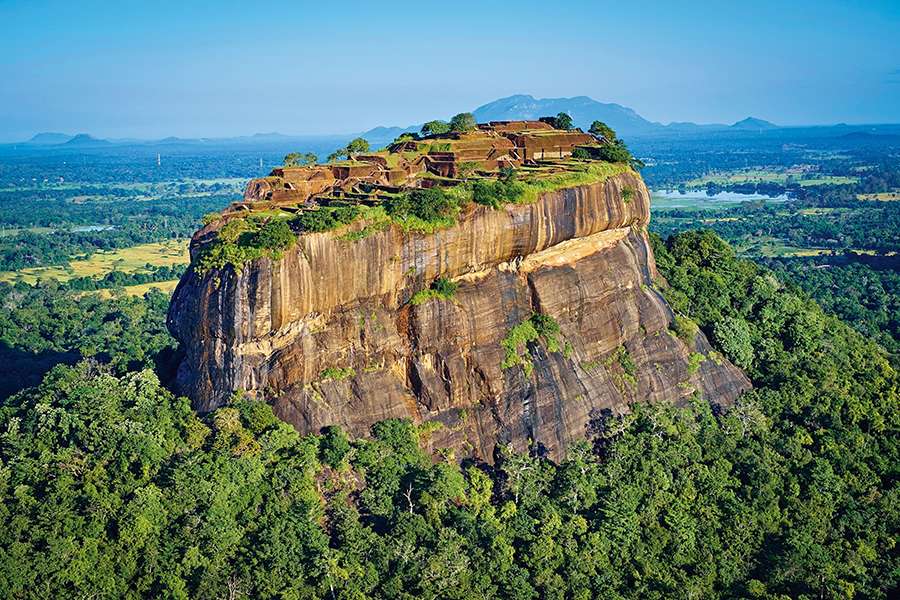
Dambulla Cave Temple
The Golden Temple of Dambulla, also known as the Dambulla Cave Temple, is a UNESCO World Heritage Site in Sri Lanka. It is a complex of five caves with over 150 Buddha statues and intricate murals, making it one of the most important and well-preserved cave temple complexes in Sri Lanka.
What is the history of the Golden Temple of Dambulla?
The Golden Temple of Dambulla, also known as the Dambulla Cave Temple, is a UNESCO World Heritage Site in Sri Lanka. It is the largest and best-preserved cave temple complex in the country, and consists of five caves that contain over 150 Buddha statues, as well as paintings and other religious art.
The history of the Golden Temple of Dambulla dates back to the 1st century BCE, when it was first excavated as a cave monastery by Buddhist monks. Over the centuries, the temple complex was expanded and embellished, and it became a major pilgrimage site for Buddhists from all over the world.
The five caves of the Golden Temple of Dambulla are:
1. The Devaraja Lena: This is the largest and most impressive cave, and it contains a 15-meter-tall statue of the Buddha.
2. The Maharaja Lena: This cave contains a reclining statue of the Buddha, as well as paintings depicting the life of the Buddha.
3. The Maha Alut Viharaya: This cave contains a large number of Buddha statues, as well as paintings of various deities.
4. The Paccima Viharaya: This cave contains a statue of the Buddha, as well as paintings depicting the Jataka tales.
5. The Devana Alut Viharaya: This cave contains a statue of the Buddha, as well as paintings of various deities.
The Golden Temple of Dambulla is a sacred place for Buddhists, and it is also a popular tourist destination. Visitors can explore the caves and admire the beautiful statues and paintings, and learn more about the history of Buddhism in Sri Lanka.
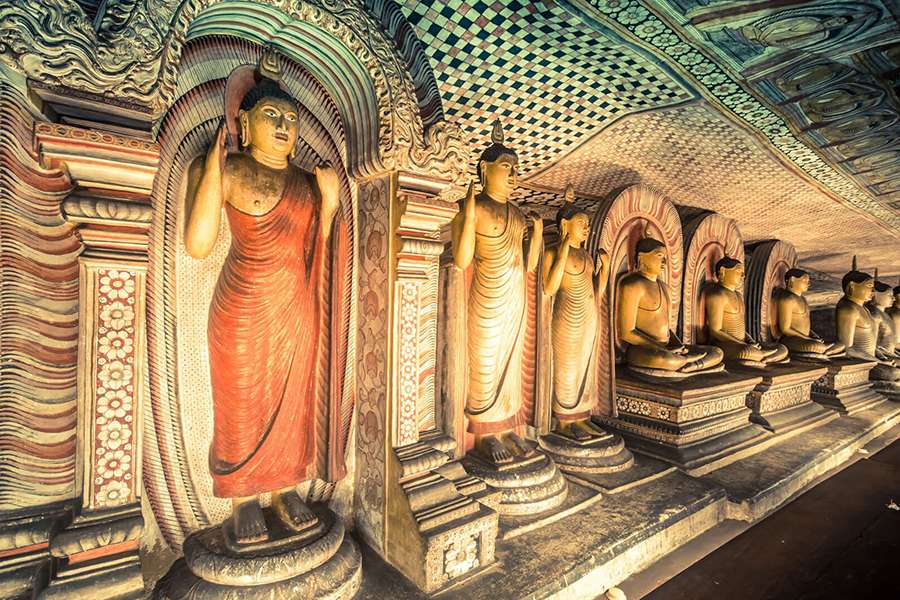
Ancient City of Polonnaruwa
The Ancient City of Polonnaruwa is a UNESCO World Heritage Site in Sri Lanka because it represents the second most ancient of Sri Lanka’s kingdoms and is known for its well-preserved ruins and impressive architecture.
What are the main attractions within the Ancient City of Polonnaruwa?
The Ancient City of Polonnaruwa is a UNESCO World Heritage Site located in Sri Lanka. It was the capital of the country from the 11th to the 13th centuries and is home to some of the best-preserved ruins of ancient Sri Lanka.
The city is divided into three main areas: the Royal Palace, the Sacred Quadrangle, and the Outer City. The Royal Palace is where the king and his court resided and is home to several impressive buildings, including the Audience Hall, the Council Chamber, and the Royal Bath. The Sacred Quadrangle is home to several Buddhist temples and stupas, including the Vatadage, the Lankatilaka, and the Gal Vihara. The Outer City is home to the remains of the city’s fortifications, as well as several other temples and stupas.
Polonnaruwa is a popular tourist destination and is well worth a visit for anyone interested in Sri Lankan history and culture.
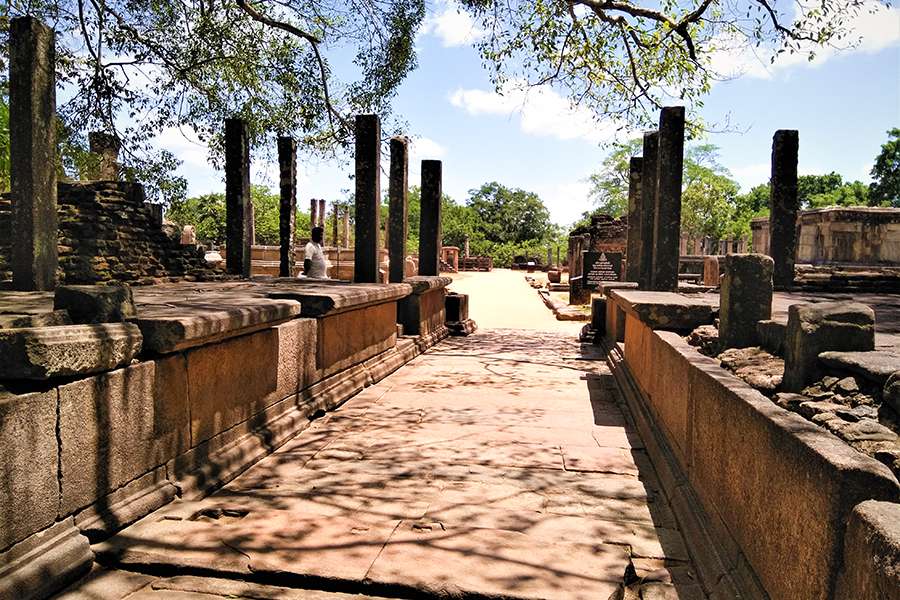
How old is the Ancient City of Polonnaruwa?
The Ancient City of Polonnaruwa is a UNESCO World Heritage Site in Sri Lanka. It was the second capital of the country from the 11th to the 13th century AD. The city is located in the North Central Province of Sri Lanka, near the modern town of Polonnaruwa.
The city was founded by King Vijayabahu I in the 11th century AD, after the destruction of the previous capital, Anuradhapura, by the Chola invaders from South India. Polonnaruwa was a prosperous city and a major center of Theravada Buddhism. It was home to many temples, palaces, and other buildings, many of which are still standing today.
The most famous building in Polonnaruwa is the Vatadage, a circular relic house that was built in the 12th century AD. Other notable buildings include the Gal Vihara, a group of four rock-cut Buddha statues, and the Lankatilaka, a large stupa that was built in the 12th century AD.
Polonnaruwa was abandoned in the 13th century AD, after the invasion of the South Indian Pandyan dynasty. The city was then largely forgotten until the 19th century AD, when it was rediscovered by British archaeologists.
Today, Polonnaruwa is a popular tourist destination. The city is home to a number of museums and archaeological sites, and it is a great place to learn about the history of Sri Lanka.
Old Town of Galle and its Fortifications
The Old Town of Galle and its Fortifications date back to the 16th century when the Portuguese first built a fort on the site. The fort was later expanded and fortified by the Dutch during the 17th century. The British also made modifications to the fort during their colonial rule. Today, it stands as a testament to the island’s colonial past and is a UNESCO World Heritage Site.
What are the main attractions within the Old Town of Galle and its Fortifications?
The Old Town of Galle and its Fortifications is a UNESCO World Heritage Site located in the city of Galle, Sri Lanka. It is a well-preserved example of a fortified European city in South Asia, and is home to a number of important historical and cultural sites.
The Old Town is surrounded by a massive stone wall, which was built by the Portuguese in the 16th century. The wall is over 2 kilometers long and 12 meters high, and it features a number of bastions and watchtowers. Inside the walls, the Old Town is a maze of narrow streets and alleys, lined with historic buildings.
Some of the most notable attractions within the Old Town include the Dutch Reformed Church, the Galle Fort Lighthouse, and the Maritime Archaeology Museum. The Dutch Reformed Church is a beautiful example of 18th-century Dutch architecture, and it is home to a number of important religious artifacts. The Galle Fort Lighthouse is a tall, white lighthouse that offers stunning views of the Indian Ocean. The Maritime Archaeology Museum is home to a collection of artifacts from shipwrecks that have occurred off the coast of Sri Lanka.
The Old Town of Galle and its Fortifications is a fascinating and beautiful place to visit. It is a UNESCO World Heritage Site for a reason, and it is sure to leave a lasting impression on visitors.

Sacred City of Kandy
The Sacred City of Kandy is significant as it is home to the Temple of the Tooth Relic, which is a major pilgrimage site for Buddhists and houses a tooth relic of the Buddha.
What are the main attractions within the Sacred City of Kandy?
The Sacred City of Kandy is a UNESCO World Heritage Site in Sri Lanka that encompasses several significant cultural and religious sites within the city of Kandy. It is known for its rich history, architectural marvels, and natural beauty. Here are some of the main attractions within the Sacred City of Kandy:
Temple of the Tooth (Sri Dalada Maligawa)
This is the most sacred Buddhist temple in Sri Lanka and houses the relic of the tooth of Lord Buddha. It is a beautiful and ornate temple complex with intricate carvings, murals, and statues.
Royal Palace Complex
The Royal Palace Complex, also known as the Kandy Lake Complex, consists of several buildings, including the Audience Hall, the Royal Palace, and the Queen’s Palace. These buildings showcase Kandyan architecture and offer insights into the royal lifestyle of the past.
Kandy Lake
This artificial lake is located in the heart of the city and is surrounded by lush greenery. It is a popular spot for locals and tourists alike, offering scenic views and a tranquil atmosphere.
Bahirawakanda Vihara Buddha Statue
This towering Buddha statue is situated on a hilltop overlooking the city. It is one of the largest Buddha statues in Sri Lanka and offers panoramic views of the surrounding area.
Peradeniya Royal Botanical Gardens
Located just outside the city center, these botanical gardens are renowned for their diverse collection of plants and flowers. They are a popular attraction for nature enthusiasts and offer a peaceful retreat from the city.
These are just a few of the main attractions within the Sacred City of Kandy. Each site holds its own historical, cultural, and religious significance, making Kandy a must-visit destination for those interested in exploring Sri Lanka’s rich heritage.
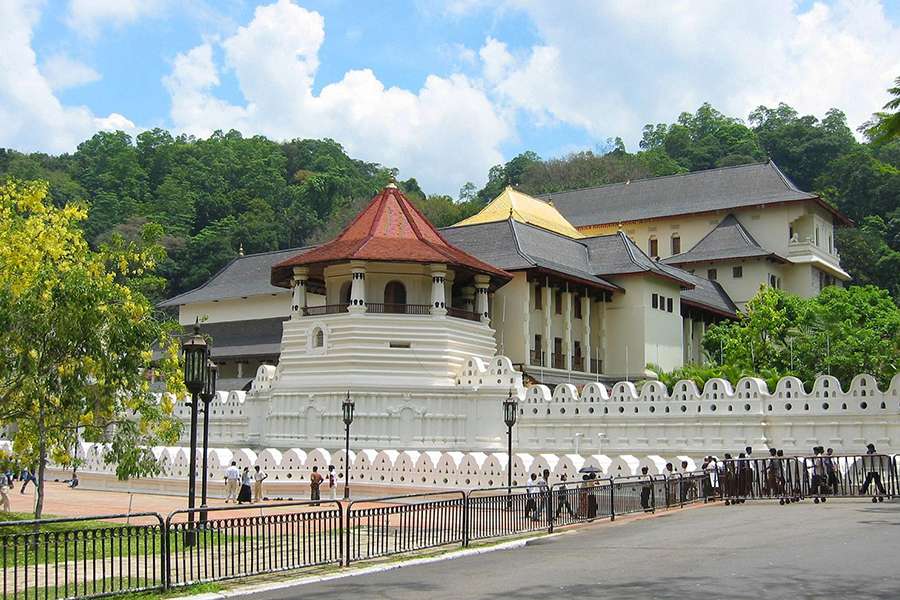
Sri Lanka boasts numerous World Heritage Sites, offering ample reasons to celebrate its natural and cultural heritage. How many of these UNESCO sites have you visited? Are there any favorite world heritage sites in Sri Lanka that we have overlooked? Share your thoughts in the comments below!

